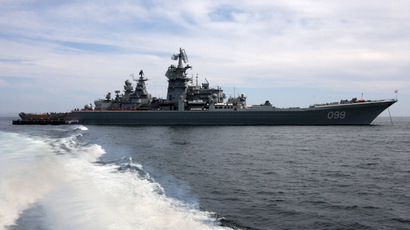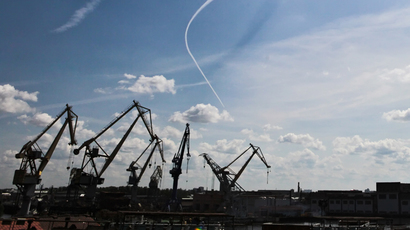Iceberg alert: Vigilance the watchword for Russian Navy on hazardous Arctic voyage

Russia’s Northern Fleet is being tested in the extreme conditions of icy Arctic waters on a mission to re-equip a Soviet-era naval base. On board the destroyer Admiral Levchenko, RT's Murad Gazdiev reports on the most treacherous part of the journey.
A common saying in the North Fleet is, “The Arctic does not forgive.” Today, that saying is perhaps more apt than at any other point in the voyage, as the task force is moving through the Laptev Sea of the Arctic Ocean, probably the most dangerous stretch of the journey. One of the nuclear icebreakers accompanying the squadron is clearing a path through the ice, as the water area is literally swarming with several hundred icebergs.
Though these ice formations may seem small from a distance, you can never tell what’s under the waves, as most of the ice mass is hidden underwater and every single one of them poses a danger to passing ships.
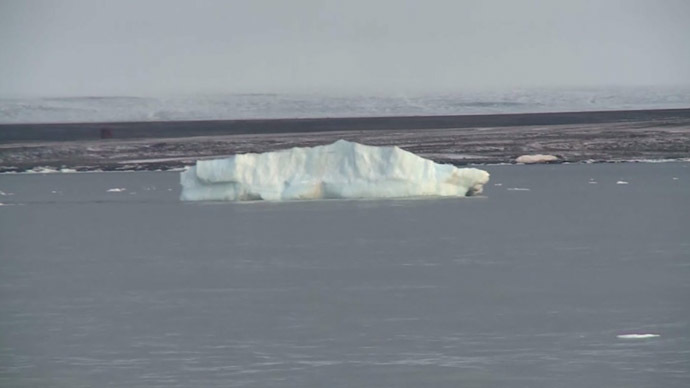
A mere scratch from even a medium-sized iceberg can spell disaster, even for a ship as large as the Admiral Levchenko.
The atmosphere on board has also changed, as crewmembers on the watch are on high alert, leaving little place for jokes or banter.
Satellites beam down ice flow maps, various systems track the icebergs and all the while helicopters scout ahead, calling in potential dangers.
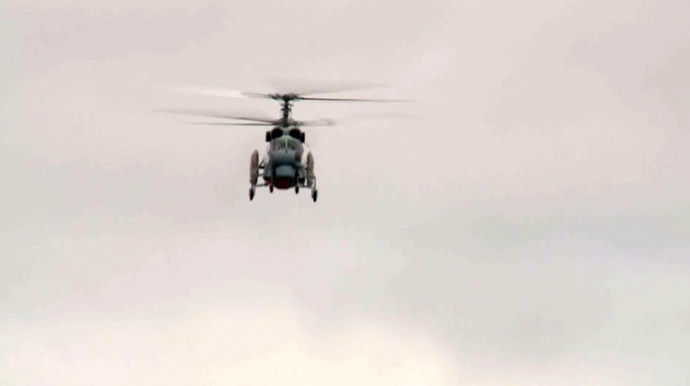
“We’re flying in difficult conditions, the clouds are very low and our freeze-warning alarms keep going off,” one helicopter pilot, Lieutenant-Colonel Evgeniy Semyonov, told RT. “There are no landmarks or features to go by, so the navigator’s job is difficult and challenging.”
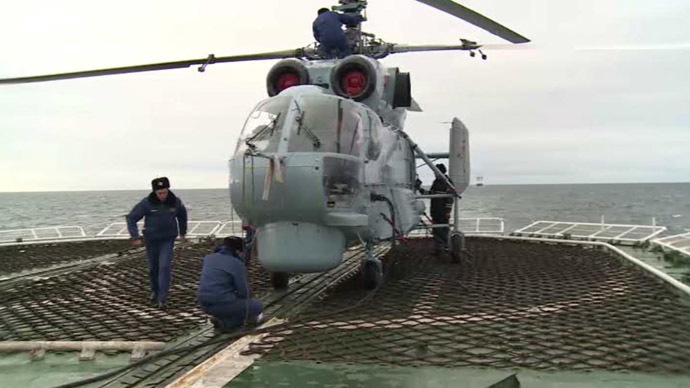
But the last and most reliable line of defense, experience has shown, is the crew themselves.
Sailors take their turn on watch on the deck, braving the howling wind and freezing cold to keep their eyes peeled for icebergs.
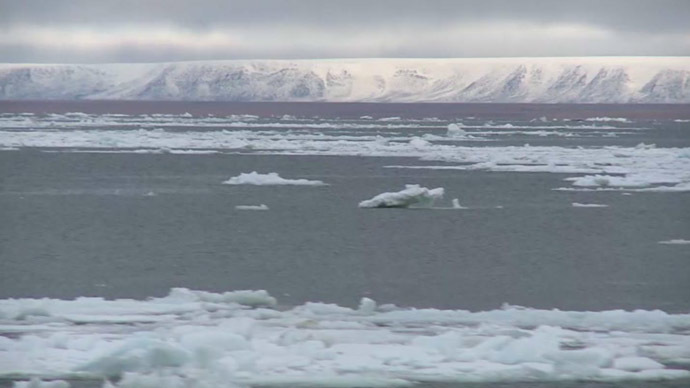
Rear-Admiral Viktor Sokolov, who’s in command of the naval group, personally flew over to one of the icebreakers for a briefing on the icy dangers ahead.
“No one could have predicted that the wind would have pushed the ice this far,” Dmitry Lobusov, the captain of the “50 Let Pobedy” icebreaker told Sokolov. “The ice lives by its own laws.”
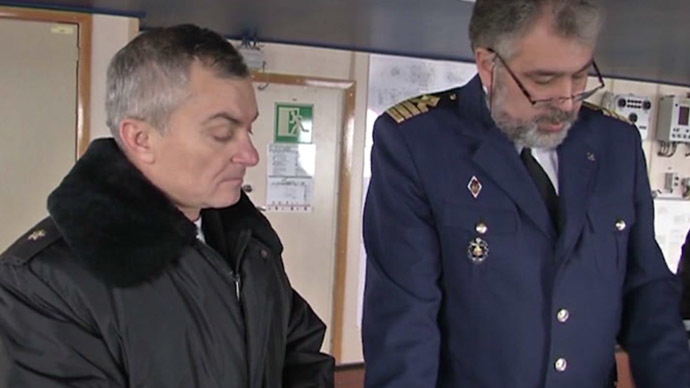
The convoy has stretched itself out in a single column; the ships are packed close together and following in the wake of the icebreakers. But it’s a mistake to think we’re safe, as the icebergs can move at tremendous speeds when the wind picks up, so the crews on all the ships remain tense and vigilant – as demanded by a century of experience traversing the north.
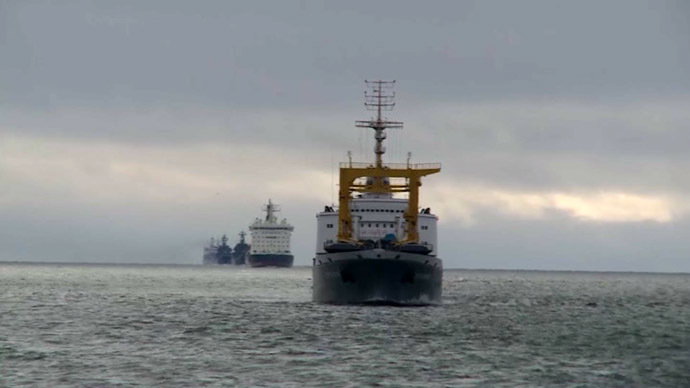
As they say: the Arctic does not forgive.
Reported by Murad
Gazdiev













